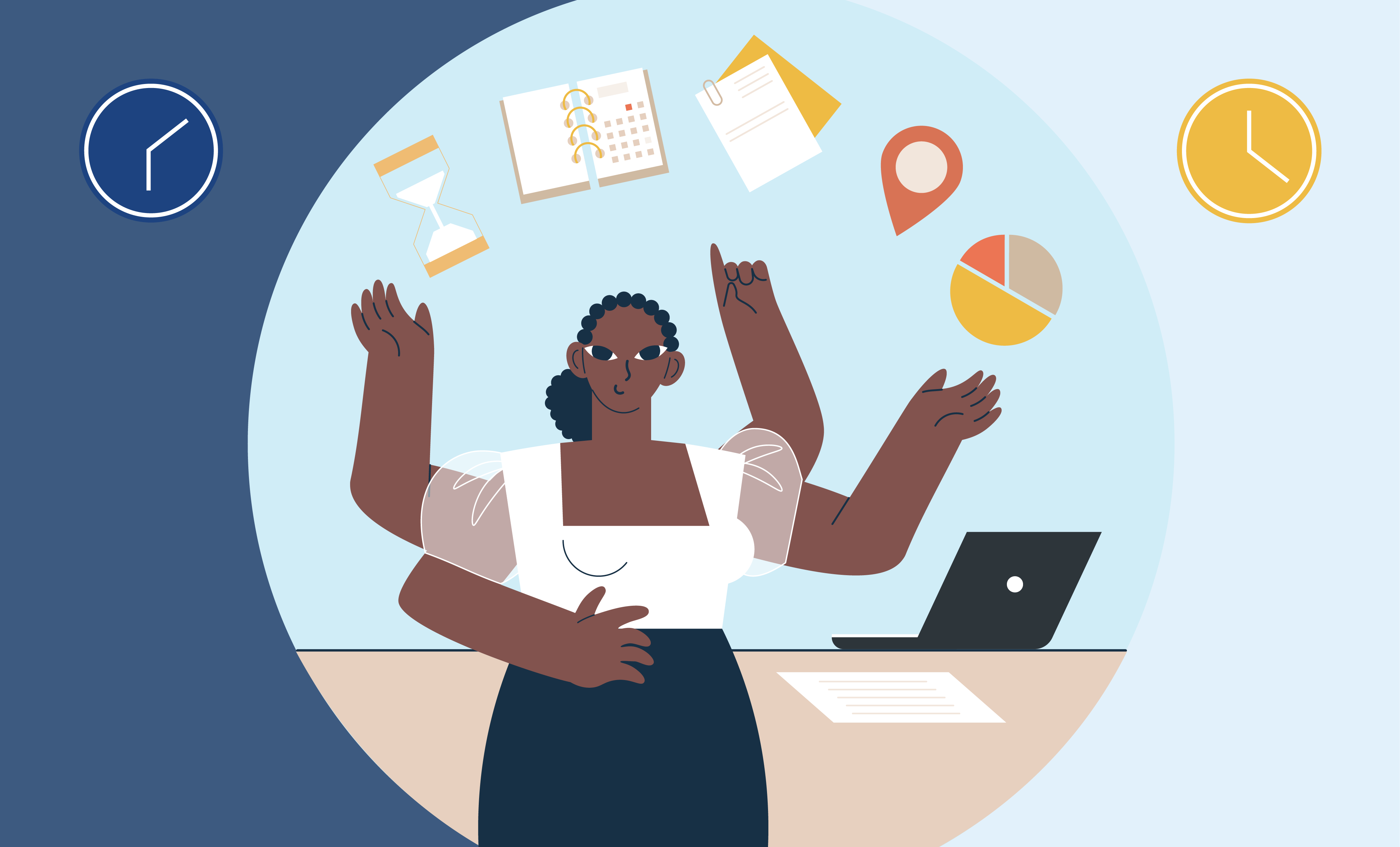What makes learning “blended”?
Blended learning is learning that's part face-to-face and part online. The “blend” part also emphasises that both parts (face-to-face and online) are actually integrated with one another (more on this later).
Why do we blend?
We blend because each mode has it's advantages. And we should play to those strengths when we can.
For instance, face-to-face learning does tend to suit real-time discussion and feedback.
And online tends to be the winner when it comes to things like learners being able to re-watch/read content at their own pace and for quizzes with automatic marking and feedback.
So, why not try to have the best of both worlds (when you can)? This is why we blend. Blended learning tries to leverage the best practices and advantages of both face-to-face and online.
Integration is integral
Sometimes when people go for blended learning models it means "sometimes online, sometimes not". But… really it should be "and" or "with". For truly blended learning, online and face-to-face components should rely or build on one another.
Here are just a few examples of how you might create online and offline components to work with one another:
- Annotating lecture slides or notes that are stored online.
- Using pulses to get real-time responses in lectures.
- Including pre-reading tasks for course readings or research articles.
- Recording the rough output of peer face-to-face discussions.
- Using in-page discussions or facilitator support channels for asking questions during face-to-face lessons.
Flavours of blended learning
There are a whole range of models of blended learning out there. And it can be a bit overwhelming trying to figure out what flavour (or flavours) are going to work for your specific learners and context.
So, we’ve tried to bring six of the common ways of getting a blend into one spot to help you compare and contrast.
And, we’ll have posts with more detail and templates for each of these coming out soon.
Flipped Learning
Get the lecture at home. Do "homework" in class.

Flipped learning flips the traditional instructional process on its head. Instead of the teacher lecturing content in class and learners doing tasks and problem sets at home... Learners get the content of the lecture online (video, article, website, etc.) which frees up face-to-face time for working on tasks and problems and discussing. Flipped is also the model we propose to boost engagement in your workshops.
Read more about the Flipped learning model in iQualify.
Hybrid learning (whole class rotation)
Switch between learning online or face-to-face on a given day.

In hybrid learning, the entire class switches between face-to-face and online learning at the same time. For instance, learners might all participate in face-to-face activity like a demonstration or discussion. Then take their learning online, completing tasks, accessing resources etc. Hybrid doesn't have to be just classes either, it's a model we often see used with adult learners in work-based learning. In this case, the face-to-face component is their workplace and learning on the job!
Station rotation
Quick switches between online and face-to-face in small groups.

In station rotation, instead of the whole class switching from face-to-face to online activities, learners rotate in small groups through a series of stations (usually within a classroom). Some stations might be face-to-face e.g. a constructive group task or feedback session with the teacher. Others might be online, searching for information or completing online quizzes etc.
Read more about the Station roation model in iQualify.
Playlists
Lists of tasks to complete - some online, some offline.

A playlist is essentially a checklist of tasks or activities to complete. So this model is kind of like an “individual station rotation”. Learners have a series of tasks to complete (online and offline) and they move through these tasks at their own pace. Often, one of the tasks is a face-to-face check in with the teacher at a strategic checkpoint in their learning. Because they’re moving through at their own pace, group work and discussions in this model tend to be online and asynchronous. This model can be very useful for staff training and induction, people work their way through a checklist of tasks and have check-in points with their manager.
Read more about the Playlists model in iQualify.
Customised playlists
Customised tasks to suit learners' skills and/or interests.

Customised playlists follow the model above, but somewhere in the design of the playlist is a level of customisation.
- Different playlists for different groups of learners in the class.
- Playlists customised for individual learners (either made by the teacher or facilitated by technology).
- Options in the playlist that allow individual learners to choose their own path.
We see this kind of model where learners might have a mentor or industry trainer. The mentor assesses where a given learner is at, and assigns them relevant next steps.
Read more about the customised playlists model in iQualify.
Hyflex
All learners get the same content and tasks, but can choose the mode.

Hyflex is the newest of these blended models. Hyflex aims to offer up the three modes or options below for every single course component:
- In person, synchronous
- Online, synchronous
- Online, asynchronous
And any learner can choose which mode will work best for them at any given moment.
Read more about the hyflex model in iQualify.
Summary
These are not the only models for blended learning. In fact, many of us pick and choose elements from different models to make our own unique blend. But, hopefully seeing these models gives you some ideas for how you might integrate your online learning with your face-to-face sessions (or vice versa).
Want to discuss ways that you can enhance your iQualify courses to achieve a blend? Get in touch with us to set up a chat with one of our team.
Not with us yet and want to know if iQualify can work for your particular context and blend? Sign up for a free trial or reach out to us for a chat.


